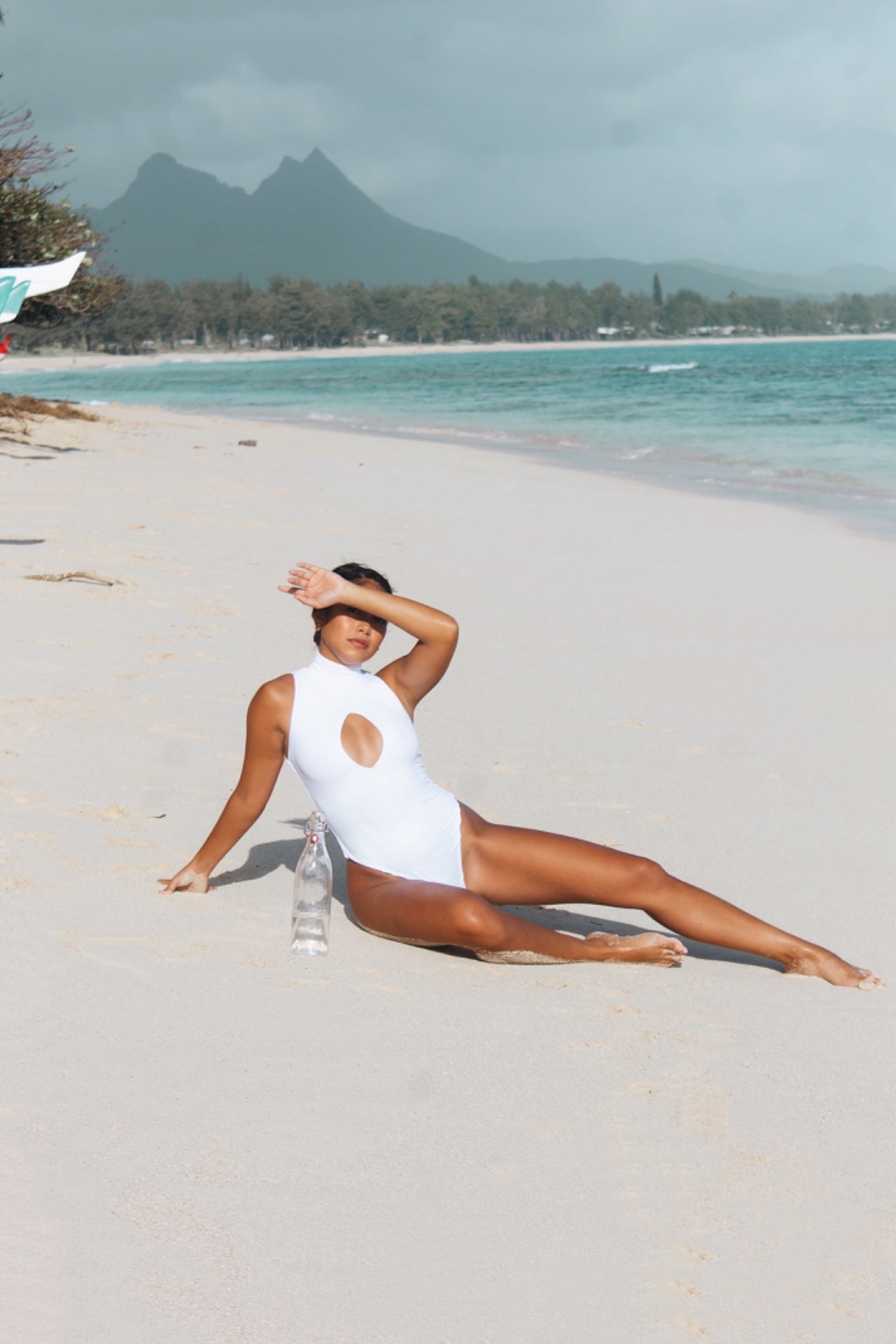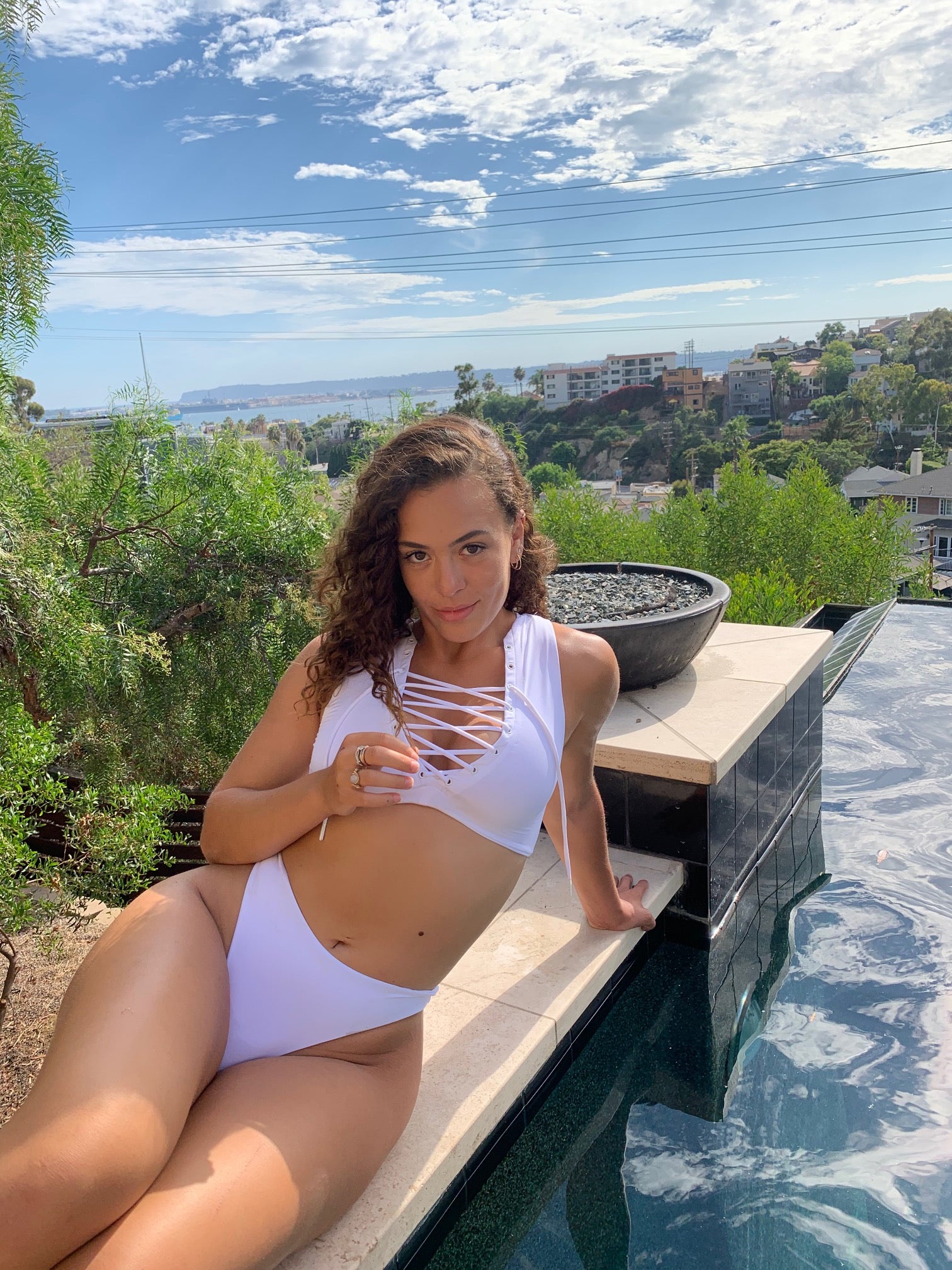If you are interested in starting a swimwear label, and don't know where to start, trust me you are not alone. When I first got the idea that I wanted to turn my amateur sketches, into actual tangible products and sell them to the world, I had no idea where to start. I did what every other person would do, I started googling things like "How do I start my own swimwear line?". To my surprise, there were not many articles written on this topic. I searched for hours and hours trying to find helpful information that would lead me to some answers. The few articles that I found were not helpful either. They were either written to discourage those bold enough to even entertain the idea of starting a business, or they were pretty generic. So, I want to give a step by step guide to how I got started, and things that I have learned a long the way. When I first knew that I wanted to start my own swimwear label, I remember feeling like I had to know everything about everything before I started. What I realized is that this actually has a negative affect and often left me feeling discouraged and helpless. That was when I decided that I was going to look at this business like a latter and start at the bottom and work my way up, step by step.
1. Naming the business
The first step is naming the business. I personally felt that coming up with the name of the business took me quite some time because I wanted it have meaning. I chose to go with something that was relevant with me at the time and I felt that it fit the personality of the brand extremely well. So I recommend choosing something that sounds nice, connects tightly with your brand, and that is relevant to your life. Definitely be original and unique, you want your brand to stick out amongst competitors. Also, don't make the name difficult to pronounce or remember, you want the name to roll off the tongue.
Make sure you look up if the name has already been trade marked, to avoid any legalities. You can do this by clicking the link below and searching your desired name into the search bar.

2. Designing the logo
Personally, this was one of my favorite parts of building my brands identity. This is when your creativity and vision for your brand will really get to flourish. First, think about how you want your brand to be looked at. Is it a luxury swimwear brand, kids swimwear, bargain swimwear etc.? Think about who your customer base is, and how you want your brand to be perceived. Be Unique. Do not be afraid to sketch out and design a logo that may differ from the ordinary "swimwear brand logo". If you see a lot of other brands doing plain text logos, do something that stands out. Start by sketching out your logo in many different fonts and formats until you see something that you love. Take that vision and go on Fiverr.com, where you can find freelance graphic designers who will recreate your logo to exactly how you want it. Don't be discouraged if this process takes longer than expected. You can always change your logo in the future, so don't worry about it being perfect.
3. Choosing the desired target market
Who you are selling to, can highly effect the way your brand will be created. If you are selling to high income, middle aged women, you will want your business to be luxurious and use designs, colors, and fonts to showcase that. Black and white are a great go-to for luxury brands. If you're brand is not labeled as "luxury" try playing around with different colors, for instance if its "eco friendly" playing around with blues and greens would be beneficial for your brand. Know who you are selling to.
4. Start sketching out your designs
Start by sketching out your designs in any way that is helpful for you. Personally, I was never good at drawing, so this was always a bit of difficult process for me. I do not have a degree in fashion or arts, but in Business Marketing. So this part of the process was a bit challenging for me at first. But the great thing is, you don't have to be good at drawing! You can always make rough sketches and send them to a freelance graphic designer who will then bring your sketches to life either on paper or on photoshop. You can always use references of other pieces to help give you an idea of how to sketch out your ideas. Start by drawing out your sketches, send them to a graphic designer to be brought to life, then make sure you label your sketches. Labeling is an extremely important step, as the manufacturer needs everything to be clear and concise so they can make the sample correctly. This will include any accessories, stitching, measurements, fabric, cuts, etc. Labeling every piece of the suit will allow for the manufacturer to finish the process much smoother and faster.

5. Finding a manufacturer
First you have to decide where you want your products to be made. Whether you want them to be made in the USA or outsourced to somewhere like Bali or China. There are pros and cons for both. If your products are made in the USA, you will be able to be more hands on and actually visit the manufacturer who is producing your products. The major difference between the two is costs. There is a huge price difference between getting your swimwear manufactured in the US, and in another country. For example, to get one sample made in Los Angeles, California would cost you $1,000 for the whole process including tech packs, production, alterations, and fittings. To get a sample made in China, is around $40. If you want to get them made in China be aware of shipping costs, tariffs, and other economical setbacks that may effect your business.
Finding a manufacturer is a journey. You will search through hundreds of different ones hoping to find the perfect match for you. And the worst part, most of the good manufacturers can not be found on Google, simply because they don't want to be found. So if you want to produce in the US, simply ask around, reach out to other brand owners and see where they are getting their stuff manufactured. This process may take a couple of months, so be patient. You can always switch your manufacture, so if you aren't satisfied don't feel stuck, you can always find what you are looking for!
Do not be discouraged if your first sample isn't perfect. I remember when I got my first sample, I was disappointed because it did not look anything like I had envisioned. But I was so excited to finally see something I created come to life that I knew it was only the beginning. So just know it will take a couple revisions before its perfect!

6. Designing your website
The first thing you need to do is buy your domain name. Go onto GoDaddy.com or Google Domains and purchase your domain name. Next, what platform you decide to use to sell your swimwear will dictate on how you set up your website. The great thing is, there are platforms like Shopify.com, that allow you to set everything up right though them. The great thing about Shopify is they have templates available for free and for purchase so you aren't breaking the bank in the beginning. First, I recommend you start by thinking about how you want your brand to be perceived. If the brand is luxurious, make sure your website is a reflection of that. At the end of the day, your marketing is what is creating value to your customers, so make sure it is as visually appealing as possible. In the beginning you may not have creative content to use for your page yet but the great thing is you can easily use curated content until you build up your content.
If you are having trouble designing your website, I recommend finding a highly skilled graphic designer on Fiverr to help. Also, there are a ton of videos on Youtube and Shopify Academy, that have a lot of information on how to create a beautiful and unique looking website.
7. Social media
One lesson that I learned in the beginning of my swimwear journey, was to always launch to an audience. So I recommend creating an Instagram, Pinterest, Twitter, Tik Tok, Youtube and Facebook account for your brand and constantly be posting on those channels. The more social media accounts you have for your brand the higher chances of your potential customer stumbling across one of your pages.
In the beginning you may not have creative content to post, and thats okay. When I first started, I was posting curated content that I found that reflected the identity of my brand, something that my customers would be interested in and engage in. This is a great way to build a following even before you receive your first sample.
Because Instagram has changed their algorithms, it makes it incredibly hard to organically grow your following without paying for advertisements. The reality is, it is not as easy for small start up brands to build their followers like it was 5 or 6 years ago. This means, you have to be unique, and post things that give people a reason to follow you instead of your competitors. Also, staying consistent on your Instagram is key to keeping your followers engaged. Always remember the rule of seven, it simply states that the prospective buyer should hear or see the marketing message at least seven times before they buy it from you. So do not be afraid to promote your brand and make yourself known!

8. Documents/Business Logistics
First things first, if you are looking to trademark your name, I recommend waiting and talking to a trademark attorney and scheduling a free consultation to gain as much insight and knowledge as possible. That way you can really weigh out the pros and cons of trademarking your name in the beginning. Remember, you do not have to technically trademark your name in order to sell products. Trademarking is quite expensive, so make sure to do a lot of research before beginning this process. The last thing you want is a big expense in the early stages of your business.
Apply for an LLC, this is something that will separate the legal matters of the business separate from you. If you are an online business, file the LCC in the state in which you reside, that way if you ever required to show up to court, you won't have to travel out of state. This LLC will also require you to open a bank account for your business and pay taxes on your business. I learned a lot about all things LLC and all documentations needed for my business on Youtube and Shopify Academy!
I really hope this article gave you some insight into how to start a swimwear line. Remember, you don't have to be a genius before you start. Just Start! And you will continue to learn as you go. Every week, make a check list of things you need to do for your brand and slowly over time, everything will start to fall into place. Set goals for the week, and go into each week with intention. Last but not least, Do Not Give Up. The road will be long, and sometimes you are walking it all alone. My most precious advise, do not give up. Keep pushing, even when no one believes in you, you believe in you. Find friends around you that support you and push you. Some days will be hard, but at the end of the day it is so worth it.
- Naudia Pate
Founder/CEO of Selina Rae Swimwear
@SelinaRaeSwimwear











50 comments
Leave a comment
This site is protected by hCaptcha and the hCaptcha Privacy Policy and Terms of Service apply.